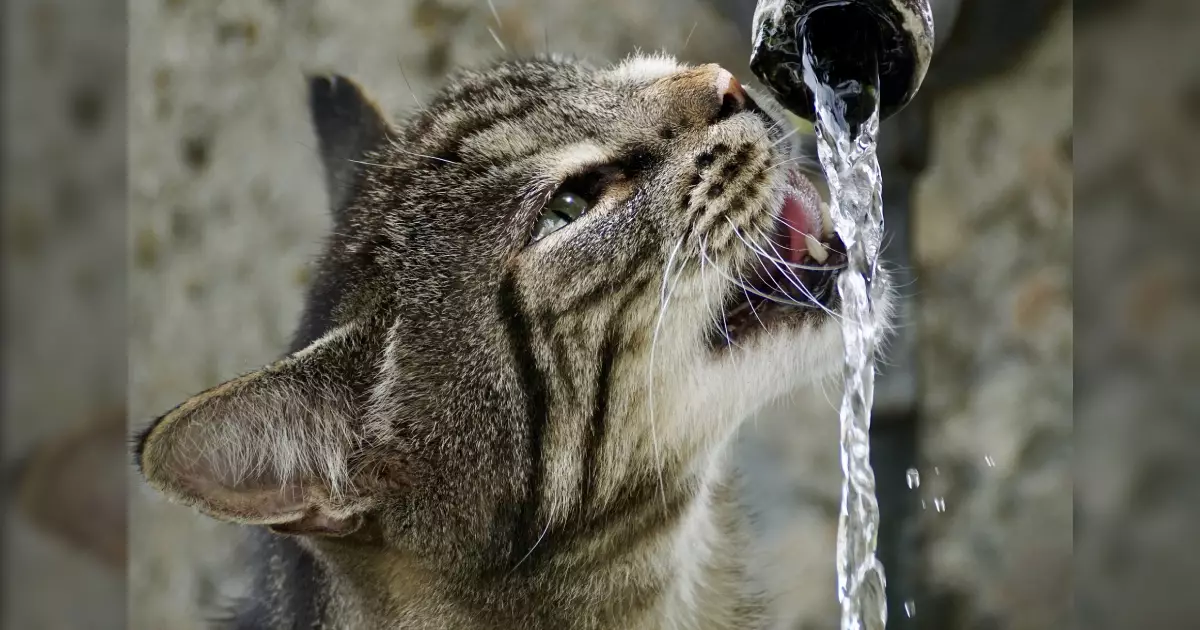For pet owners, especially those with cats, maintaining a clean and inviting water source is often a daily battle. While we understand the importance of hydration, few realize that the seemingly innocent water bowl can become a breeding ground for slimy buildup—an insidious problem that compromise a feline’s health and happiness. The formation of water slime isn’t just an aesthetic concern; it’s a covert threat to our pets’ well-being, turning simple hydration into an unsanitary chore. This challenge reveals an uncomfortable truth: our efforts might not be enough if we don’t understand the root cause and the necessary maintenance routines.
Many pet owners rely on automatic fountains, lured by the promise of fresh, flowing water which appeals to cats’ natural instincts. Yet, beneath the appealing surface lies a complex machinery prone to slime accumulation. Over time, mineral deposits, algae, and bacteria coalesce within the pump and water channels, turning the fountain from a lively cascade into a sluggish trickle. And that sluggishness often signals a silent lull in water quality, discouraging cats from drinking and risking dehydration.
Why Do Water Slimes Appear and How Can You Recognize Them?
The formation of slime is rooted in biological processes. Organic residues, warm temperatures, and stagnant water collaborate to foster bacterial colonies. Cats’ water fountains, especially those made of plastic, ceramic, or stainless steel, aren’t immune. The buildup starts small—imperceptible at first—but quickly escalates into a filmy layer that clings stubbornly to pump components and the water channels. Recognizing slime isn’t difficult; it feels slimy to the touch and accumulates as a cloudy film that often gives off a faint odor.
What’s particularly troubling is that slime can escape vigilant eyes, simply blending into the water, masquerading as part of the aesthetic. For conscientious pet parents, signs of declining water flow and a duller water appearance are red flags. When your furry companion shows less interest in drinking, it’s a clear sign that you’re fighting an uphill battle with the system—one that requires immediate attention.
Effective Strategies for a Deep Clean
Thorough cleaning isn’t just about aesthetic appeal; it’s about safeguarding health. The most effective approach involves disassembling the fountain’s pump and meticulously removing any slime lurking within. Disassembly might seem complicated at first glance, but with patience and the right tools, it becomes a manageable task. Most fountains include small brushes designed for this purpose, but inexpensive alternatives like cotton swabs and soft brushes can suffice.
Start by unplugging the fountain, then carefully drain the water and disassemble the pump. The key to effective cleaning lies in getting into every nook and cranny—a process that demands attention to detail. The propeller, a crucial component that drives water flow, often becomes contaminated with slimy deposits. Removing it carefully with tweezers is advisable, as excessive force may damage delicate parts. Once disassembled, soak all components in warm, soapy water, scrubbing stubborn deposits away. Pay special attention to the tiny channels and the vicinity of the propeller, ensuring no residue remains.
For a more in-depth clean, a vinegar solution can be employed. An equal mix of water and vinegar helps dissolve mineral deposits and inhibit future slime growth. However, vinegar isn’t a permanent fix; regular disassembly and scrubbing—at least monthly—are essential for keeping the fountain hygienic and functional. Rinse everything thoroughly before reassembly to prevent lingering odors or chemical residues that might deter your cat from drinking.
Preventative Care and Long-Term Maintenance
Prevention is always better than cure. Routine maintenance involves not only deep cleaning but also making strategic choices. Opt for stainless steel or ceramic fountains whenever possible, as they resist slime better than plastic. Moreover, maintaining strict cleaning schedules—bi-weekly or monthly—is critical to prevent slime buildup. Using filtered water can reduce mineral deposits and keep bacterial growth at bay.
Finally, don’t forget the importance of consistent monitoring. Whenever your cat shows disinterest or the water appears cloudy or slimy, it’s time for an inspection and thoroughly cleaning. Remember, a clean fountain guarantees your feline’s health, happiness, and hydration levels—ensuring that every sip is fresh, safe, and enticing.
In the end, maintaining a pet fountain isn’t merely a chore; it’s an investment in your cat’s well-being. Proper cleaning routines, strategic replacements, and vigilant observation can transform a stubborn, slime-laden fountain into a pristine, flowing oasis that your feline deserves.

